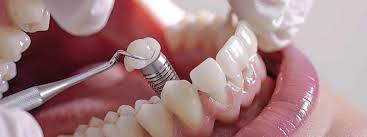A healthy, confident smile can make all the difference in how you look and feel, but damage, decay, or missing teeth can sometimes get in the way. From simple fillings to crowns, modern dentistry offers a range of solutions to repair, rebuild, and rejuvenate your smile. Understanding the different types of dental restoration available can help you choose the right option to restore both function and beauty to your teeth.
Types of Tooth Restoration Treatments
There are various dental restoration treatments available. Here are some of them:
- Fillings: Fillings repair small holes in teeth, commonly referred to as cavities. Your dentist removes the decayed part and fills the space with special material. Modern fillings use tooth-colored materials that blend with your natural teeth.
- Crowns: Crowns cover the visible part of a damaged tooth. Think of them as caps that protect weak teeth. Your dentist shapes the crown to match your other teeth perfectly.
- Dental Bridges: Bridges replace one or more missing teeth by connecting to nearby healthy teeth. The replacement tooth sits between two crowns that attach to your existing teeth.
- Dental Implants: Dental implants replace missing tooth roots with titanium posts placed in your jawbone. After the implant heals, your dentist attaches a crown on top. This oral restoration option feels and works just like natural teeth.
- Dentures and Partials: Dentures replace multiple missing teeth with removable appliances. Full dentures replace all teeth in your upper or lower jaw. Partial dentures fill in gaps when you still have some healthy teeth.
- Veneers: Veneers are thin shells that cover the front surface of teeth. They fix chips, stains, and gaps between teeth. This cosmetic dental repair improves how your teeth look without major changes.
- Bonding: Bonding uses tooth-colored resin to fix small chips and cracks. Your dentist applies the material directly to your tooth and shapes it to match.
These dental restoration treatments provide effective solutions to enhance both the functionality and appearance of your teeth.
Choosing the Right Treatment for Your Needs
Several factors help determine which dental restoration works best for you. The size and location of the damage are fundamental. Small cavities often need fillings, while badly damaged teeth may need crowns. Your budget also plays a role in treatment choice. Some options cost more upfront but last longer. For instance, dental implants cost more than bridges but often last a lifetime with proper care.
Your dentist will examine your teeth and explain your dental restoration options. They look at X-rays to see damage you might not notice. Together, you decide which teeth restoration services fit your needs and goals.
Digital technology enables faster and more precise treatments. Same-day crowns eliminate the need for temporary crowns and multiple visits. Computer-guided implant placement improves accuracy and healing time. These advances in oral restoration help you return to your normal activities quickly. You get better function and appearance with less time in the dental chair.
Schedule Your Dental Restoration Consultation
Dental restoration treatments offer effective solutions for damaged or missing teeth. From simple fillings to complex implants, these procedures restore function and appearance. Modern techniques make treatments more comfortable and successful. Contact your dentist to schedule an appointment to discuss the restorative dentistry options that may help improve your oral health.


Leave a Reply